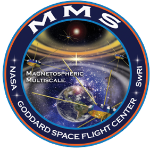Within collisionless turbulent plasmas, intense thin current sheets can undergo magnetic reconnection - a process thought to play a crucial role in both turbulence dynamics and energy dissipation. The prevalence of magnetic reconnection may be influenced by the properties of the turbulent fluctuations in different environments. The Magnetospheric Multiscale mission (MMS) provides high-resolution, multi-point observations of the Earth's turbulent magnetosheath, well suited for identifying turbulence-driven magnetic reconnection. However, identifying reconnection sites in observations remains challenging and time-consuming due to the range of scales, complex magnetic field topologies, and localized signatures involved. Therefore, we aim to systematically identify magnetic reconnection events in turbulent plasma observations using the unsupervised Machine Learning (ML) algorithm, Toeplitz Inverse Covariance-Based Clustering (TICC). This method requires key physical features that highlight magnetic reconnection sites as input. TICC clusters timeseries data by modelling each cluster as a time-invariant correlation network, enabling the detection of complex patterns across time within the turbulent environment. The algorithm's ability to identify reconnection events is first evaluated against existing datasets of turbulence-driven reconnection and once the cluster associated with reconnection is identified, each candidate structure is examined in a local current sheet aligned (LMN) coordinate system to confirm the presence of characteristic reconnection signatures, such as reversals in the reconnecting component of the magnetic field, outflow jets, features in the Magnetic Flux Transport Velocity, and energy conversion. This approach combines automated detection with physical validation. Ongoing work will extend the result to a broader range of turbulent datasets to provide insight into how the role of reconnection may vary across different turbulent environments.

 PDF version
PDF version
